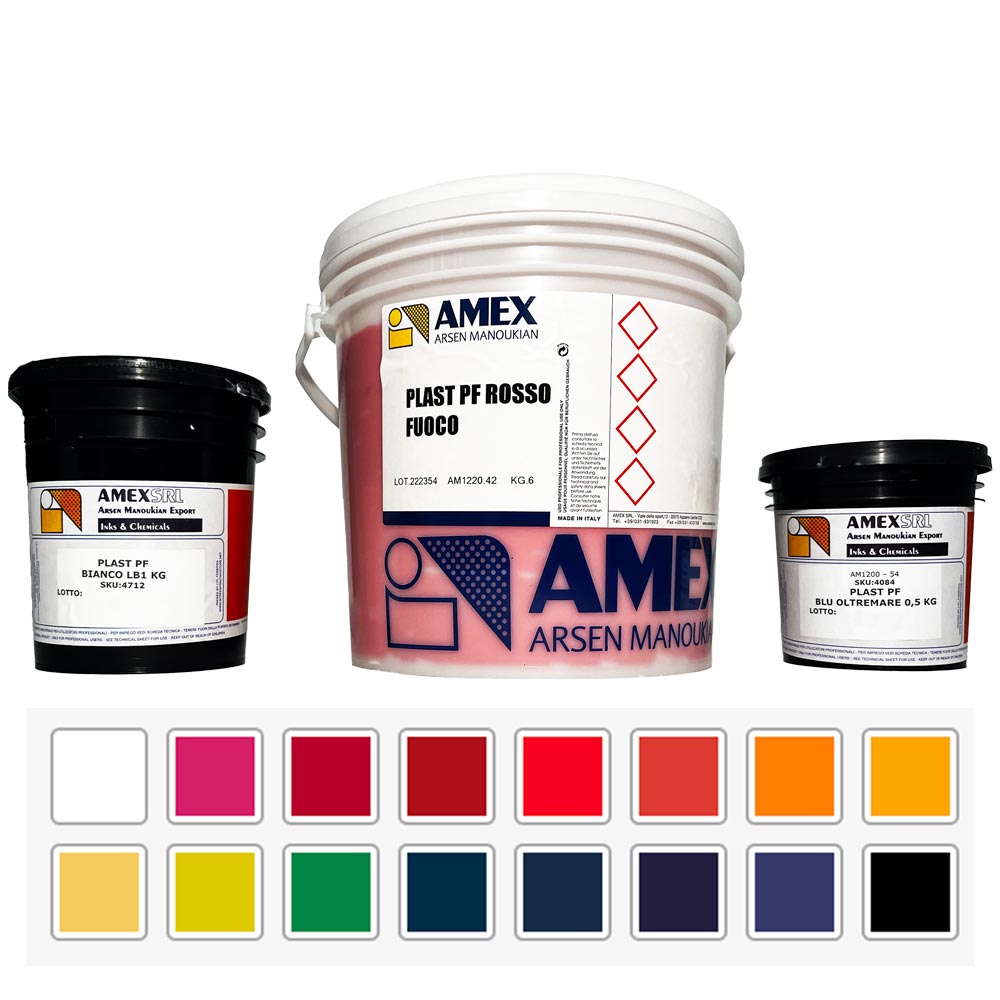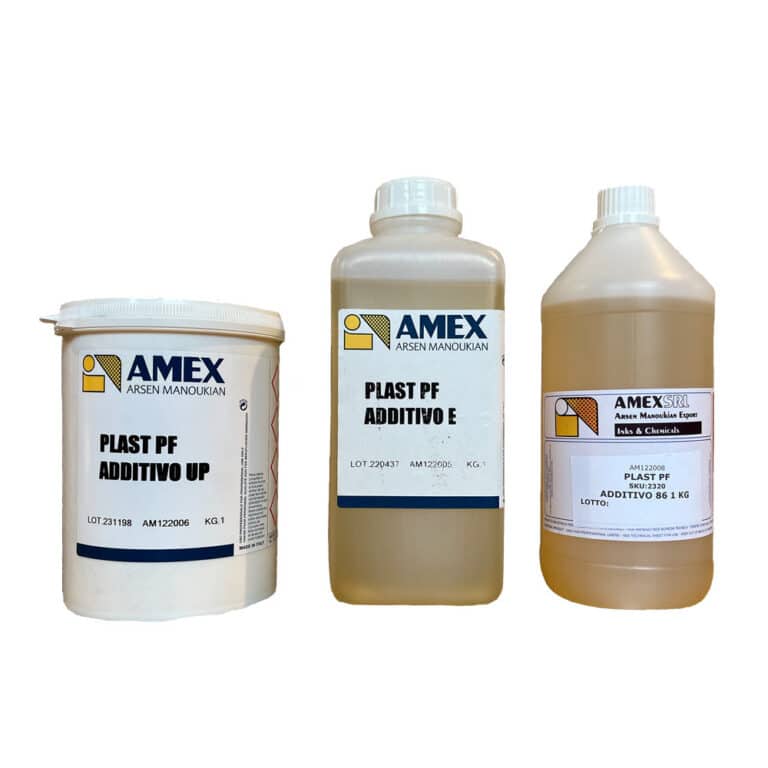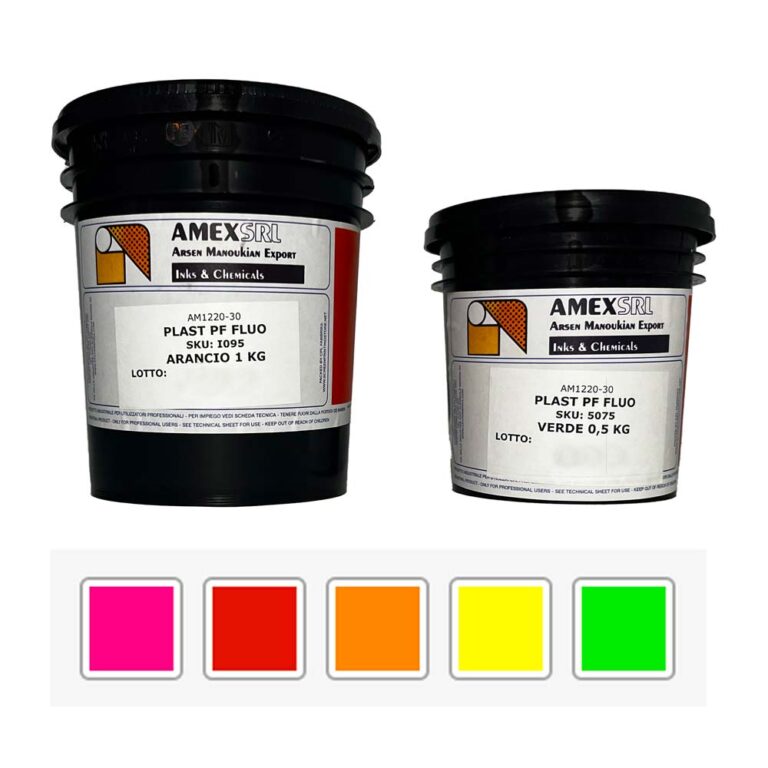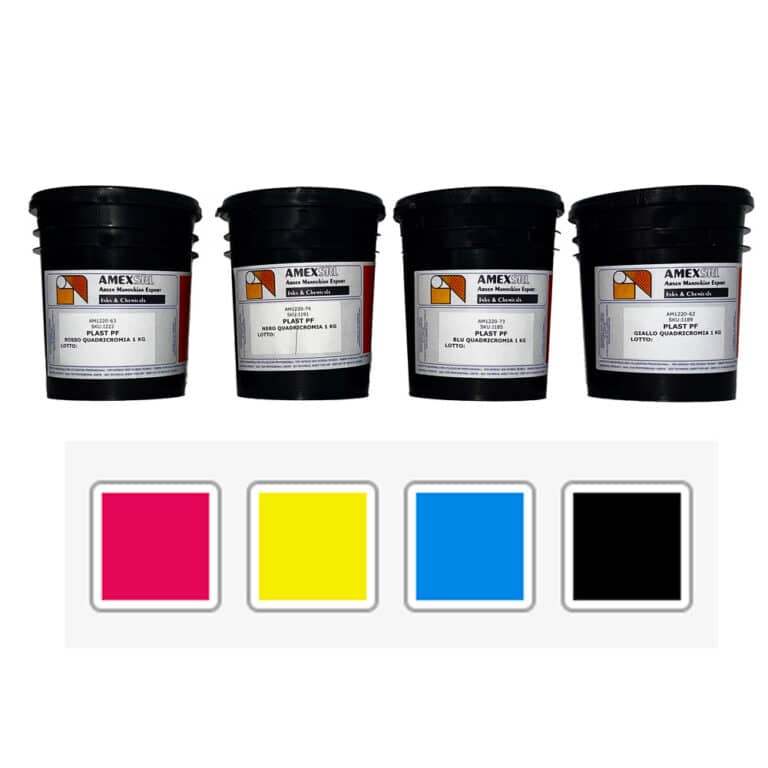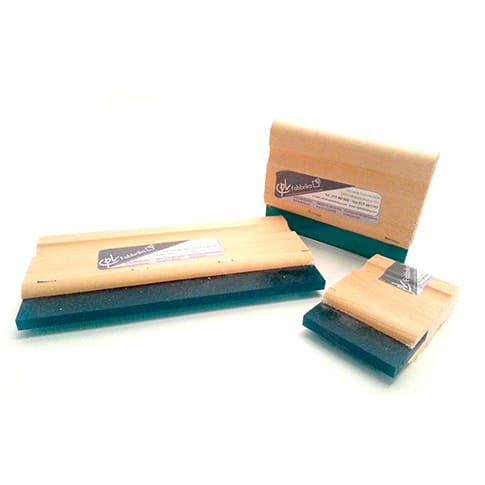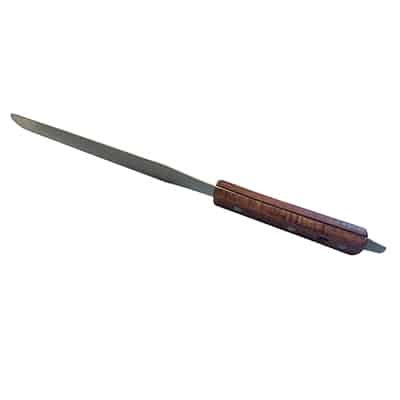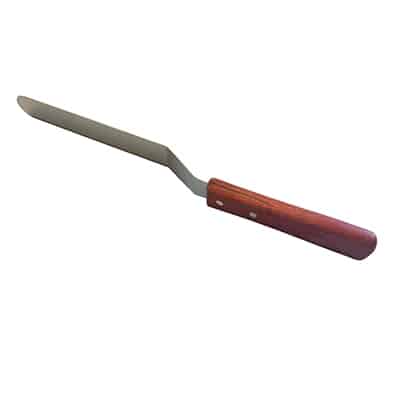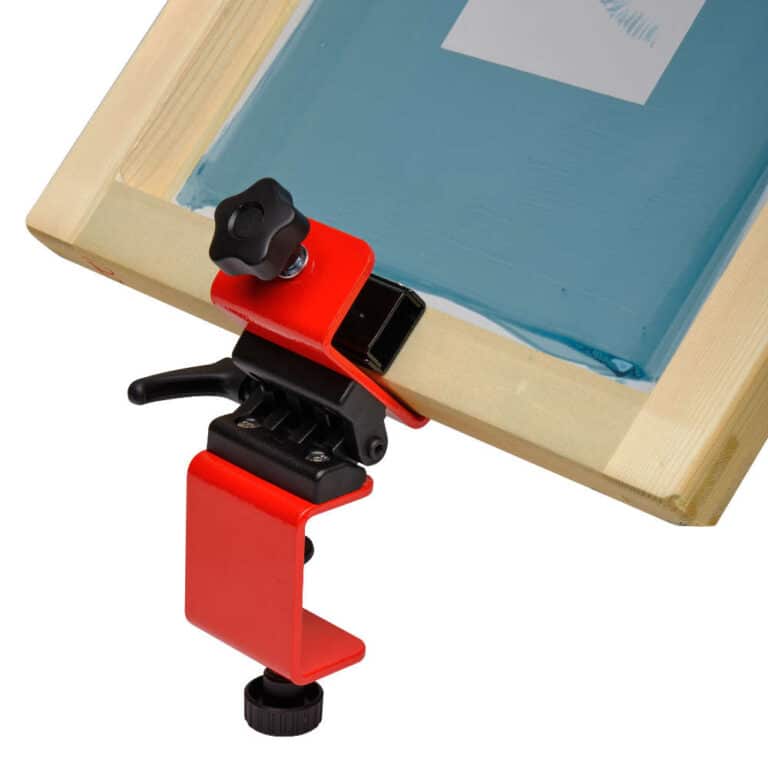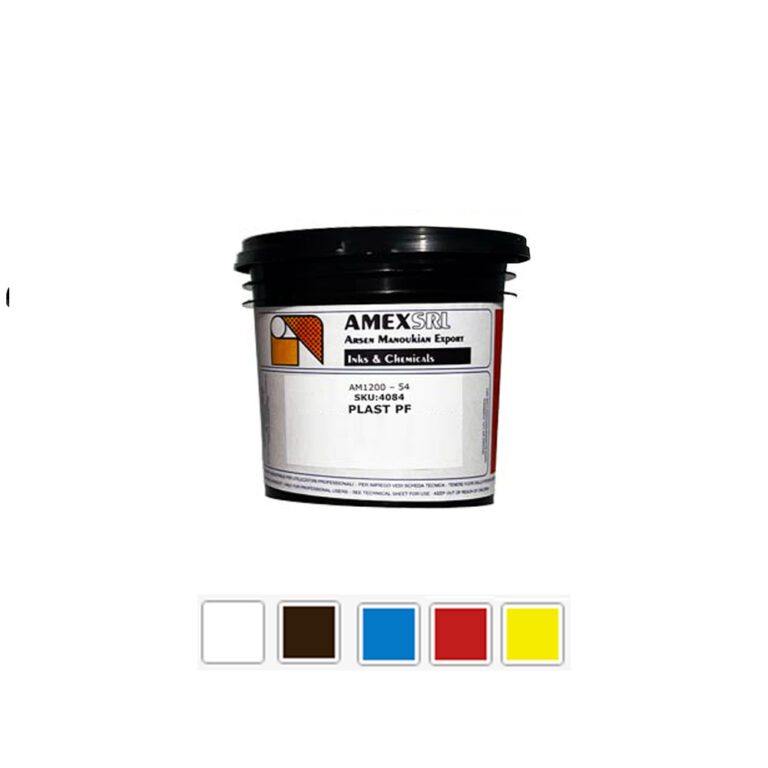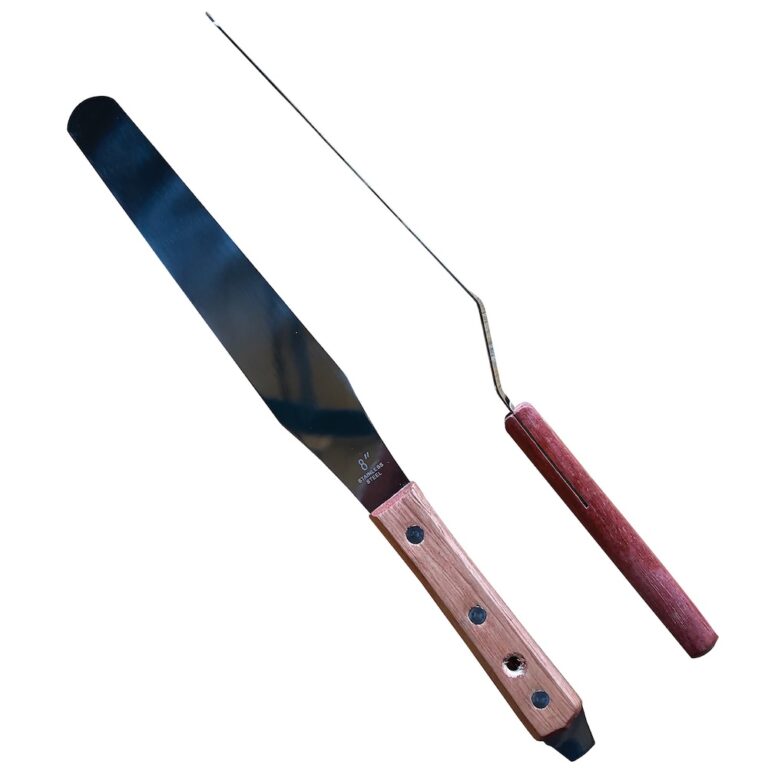Plast Amex Plastisol inks are ideal for printing on T-shirts and sweatshirts.
The key characteristics of Plastisol inks are their excellent coverage and good printability.
In addition, Plastisol delivers excellent results on dark fabrics with a good shine, as well as guaranteeing superlative wash resistance at 60°C. They’re ready-to-use, but we always suggest checking the viscosity before using. To make Plastisol ink more liquid, it needs to be kept and used at approximately 20°C.
It needs to be stirred very well before use: it’s a thixotropic material, so it’s rendered more liquid when vigorously shaken or agitated. If necessary, it can be diluted by adding Plastisol Thinner 86, a thinner specifically created for Plastisol inks; this must be added slowly while always stirring to check the viscosity.
The white is very rich in pigments to ensure good opaqueness, so it’s denser than the other colours. After using Plastisol inks, the tools can easily be cleaned using Screen Cleaning Solvent.
Plastisol inks can polymerise and adhere to the material in three different ways: using a flash dryer at 160°C for one minute using a heat press at 180°C for 90 seconds (leaving a 1 cm space) using an oven: 160°C for 2 to 3 minutes
The heat press method is the most convenient and practical approach, it’s outlined here below:
– with the plates lowered, use the black knob on the heat press to set a distance of 10 mm between its two plates;
– this will allow the top plate, the one that delivers the heat, to avoid contact with the wet ink on the T-shirt;
– set a temperature of 180°C and a time of 70-80 seconds.
By following this approach, there’s no need to use baking paper, tissue paper or a silicon mat and the process can be completed much more quickly.
Heat presses are a safe way to polymerise Plastisol inks, they deliver excellent results for the many screen printers who prefer not to use an oven.
This is because heat presses can be completely controlled, both in terms of time and temperature, and the same operation can be repeated over and over again with exactly the same parameters.
If you’re only printing on a few items, i.e. no large print runs, a cheap heat press with a 38 x 38 cm plate would be perfectly adequate.
If you decide to purchase a heat press, we’d be very happy to advise you on the most convenient and effective way to use it.
Plastisol inks can be mixed together to obtain many colour variations, for example, by adding some red and blue together you’ll get a more purple colour, but if you need an opaque, well-pigmented purple, we would recommend buying the ready-to-use colour rather than purchasing blue and red separately and combining them.
When mixing colours together, there’s a risk of not obtaining a particularly opaque colour, one which offers little shine and lacks intensity.
